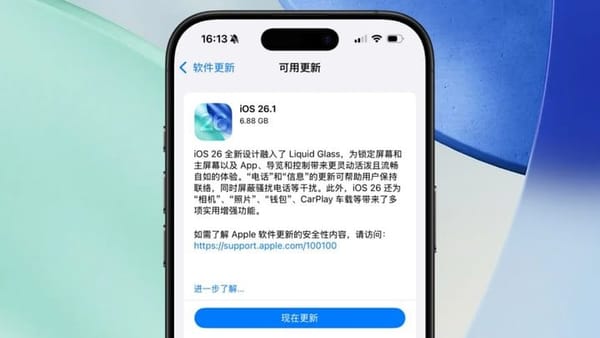MCP Meets Code Execution: Building More Efficient AI Agents

Code Execution with MCP: Building More Efficient Agents
Model Context Protocol (MCP) is an open standard for connecting AI agents to external systems.
---
Why MCP Matters
Traditionally, connecting agents to tools or datasets required custom development for each “agent-tool” pair, leading to:
- Severe fragmentation.
- Duplicated effort.
- Low scalability.
MCP fixes this by offering one universal protocol:
- Implement MCP once in your agent.
- Gain access to the entire integration ecosystem.
Since its November 2024 launch, MCP has seen rapid growth:
- Thousands of MCP servers created.
- SDK support for all major languages.
- Industry adoption as the de facto agent-tool connection standard.
---
The Core Problem: Token Overload
Agents now connect to hundreds or thousands of MCP tools.
But current practices introduce severe performance and cost issues:
Common Inefficient Patterns
- Loading all tool definitions at start-up
- Passing every result through the context window
> Context window = Agent’s working memory for reasoning. It’s powerful but space-limited.
These patterns slow down agents and increase token consumption — the basic unit of model processing.
---
1. Tool Definitions Overwhelm the Context Window
Most MCP clients preload tool definitions before execution:
gdrive.getDocument
Description: Retrieves a document from Google Drive
Parameters:
documentId (required, string): The ID of the document to retrieve
fields (optional, string): Specific fields to return
Returns: Document object with title, body, metadata, permissions
salesforce.updateRecord
Description: Updates a Salesforce record
Parameters:
objectType (required, string)
recordId (required, string)
data (required, object)
Returns: Updated record object with confirmationWhy this is costly:
- Thousands of tools = hundreds of thousands of tokens.
- They occupy valuable context space before the actual task starts.
---
2. Extra Token Use from Intermediate Results
Direct tool calls often duplicate large data in context:
TOOL: gdrive.getDocument('abc123')
→ returns full transcript (stored in context)
TOOL: salesforce.updateRecord(..., Notes: full transcript)
→ transcript sent to model againImpact:
- A 2-hour meeting transcript = +50,000 tokens overhead.
- Large datasets can overflow context limits.
---
The Solution: Code Execution with MCP
Instead of direct tool invocation:
- Treat MCP servers as code APIs.
- Let the agent write and run code to call these APIs.
- Load only the tools needed for the task.
- Process and filter results inside the execution environment before sending minimal output to the model.
Example Project Structure
servers/
├── google-drive/
│ ├── getDocument.ts
│ └── index.ts
├── salesforce/
│ ├── updateRecord.ts
│ └── index.ts---
Sample Tool File
// ./servers/google-drive/getDocument.ts
import { callMCPTool } from "../../../client.js";
interface GetDocumentInput {
documentId: string;
}
interface GetDocumentResponse {
content: string;
}
export async function getDocument(input: GetDocumentInput): Promise {
return callMCPTool('google_drive__get_document', input);
}---
Multi-Tool Code Execution Example
import * as gdrive from './servers/google-drive';
import * as salesforce from './servers/salesforce';
const transcript = (await gdrive.getDocument({ documentId: 'abc123' })).content;
await salesforce.updateRecord({
objectType: 'SalesMeeting',
recordId: '00Q5f000001abcXYZ',
data: { Notes: transcript }
});Result: Token usage dropped from 150,000 → 2,000 (98.7% savings).
---
Benefits of MCP + Code Execution
1. On-Demand Tool Loading
- Model reads only needed tools.
- Optional `search_tools` endpoint with adjustable detail levels.
2. Context-Efficient Results
Filter large datasets in code before returning to model:
const allRows = await gdrive.getSheet({ sheetId: 'abc123' });
const pending = allRows.filter(r => r.Status === 'pending');
console.log(pending.slice(0,5)); // show only first 5---
3. Rich Logic Support
Loops, conditionals, and real error handling without repeated context hops:
let found = false;
while (!found) {
const messages = await slack.getChannelHistory({ channel: 'C123456' });
found = messages.some(m => m.text.includes('deployment complete'));
if (!found) await new Promise(r => setTimeout(r, 5000));
}
console.log('Deployment notification received');---
4. Privacy-Preserving Workflows
Sensitive data stays in the execution environment — never exposed to the model:
const masked = contacts.map(c => ({
name: c.name,
phone: tokenize(c.phone),
email: tokenize(c.email)
}));
salesforce.importContacts(masked);---
5. State Persistence & Skills
Store intermediate results and build reusable functions:
await fs.writeFile('./workspace/leads.csv', csvData);
const saved = await fs.readFile('./workspace/leads.csv', 'utf-8');Skills = folders of reusable scripts + `SKILL.md` descriptions for model reference.
---
Security Considerations
Running agent-generated code requires:
- Sandboxing (details)
- Resource limits
- Monitoring for safe execution
---
Summary
MCP connects agents to massive toolsets efficiently.
Code execution fixes context overflow by:
- On-demand tool loading.
- Pre-processing results locally.
- Supporting complex logic securely.
This approach:
- Reduces token cost.
- Improves speed & scalability.
- Preserves privacy.
---
For creators & multi-platform publishing:
Platforms like AiToEarn官网 align perfectly:
- AI content creation
- Cross-platform distribution
- Analytics & model ranking
- Monetize workflows across Douyin, Bilibili, Instagram, X (Twitter), and more.
---
Learn More & Join the Discussion:




